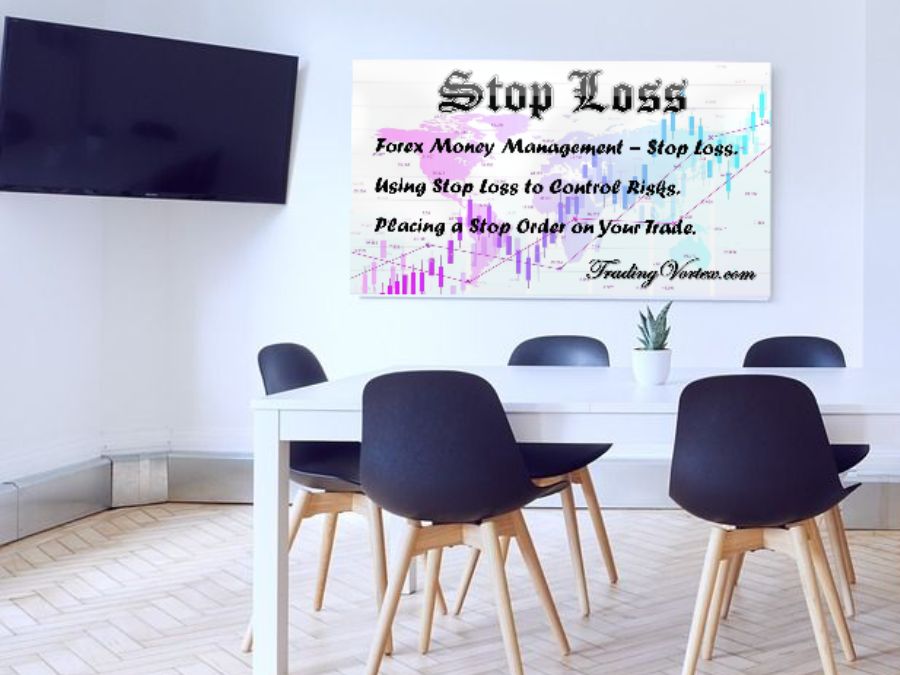Table Of Contents:
- Introduction to Stop Loss Orders:
- Benefits of Using Stop Loss Orders:
- Types of Stop Loss Orders:
- Setting Stop Loss Orders Effectively:
- Common Mistakes to Avoid with Stop Loss Orders:
- Advanced Strategies with Stop Loss Orders:
- Risk Management Tips for Stop Loss Orders:
- Reviewing and Adjusting Stop Loss Orders:
- Stop Loss Success Stories – Real-Life Lessons in Risk Management:
- Stop Loss Orders – Your Key to Confident and Successful Trading:
Introduction to Stop Loss Orders:
Alright, fellow traders, gather round! Today, we're diving into a crucial aspect of trading: Stop Loss Orders. Now, I know what you might be thinking – "Stop losses? Why bother?" Well, my friend, let me tell you, these little gems can make all the difference between a successful trade and a financial disaster.
Understanding the Basics of Stop Loss Orders:
It's like having a parachute strapped to your back before jumping out of a plane – sure, you hope you won't need it, but it's there just in case. With a stop loss order, you're defining the maximum amount of money you're willing to lose on a trade. And trust me, that kind of clarity can do wonders for your peace of mind.
Importance of Stop Loss Orders in Trading:
Now, let's talk about why stop loss orders are absolutely essential in trading. Picture this: you've done your research, you've analyzed the charts, and you've made what you think is a solid trade. But then, out of nowhere, the market takes a nosedive, leaving your investment in shambles.
Without a stop loss order in place, you're at the mercy of the market's unpredictable whims. And let me tell you, that's not a position you want to find yourself in. By using stop loss orders, you're taking control of your risk management strategy and protecting yourself from potential losses.
Think of it as insurance for your trades – sure, it might cost you a little upfront, but it could save you a whole lot more in the long run. So, whether you're a seasoned pro or just dipping your toes into the world of trading, remember this: stop loss orders are your best friend in the game of risk management. Trust me, you'll thank yourself later.
Benefits of Using Stop Loss Orders:
Alright, fellow traders, let's talk about the golden perks of using stop loss orders. I'm telling you, these babies are the unsung heroes of the trading world, and once you grasp their benefits, you'll wonder how you ever traded without them.
Risk Management – Safeguarding Your Investments:
First up, let's chat about risk management – every trader's best friend. Picture this: you've made a killer trade, and you're riding high on that wave of success. But then, out of nowhere, the market takes a nosedive, and suddenly, your profits start dwindling faster than you can say "sell."
Enter the stop loss order, swooping in like a superhero to save the day. By setting a predetermined exit point, you're effectively limiting your potential losses and protecting your hard-earned capital. It's like having a safety net beneath you as you walk the tightrope of trading – sure, you might stumble, but you won't fall flat on your face.
And here's the beauty of it: stop loss orders give you the freedom to take calculated risks without the fear of losing it all. You can sleep soundly at night knowing that even if a trade goes south, you've got a plan in place to mitigate the damage. It's risk management at its finest, my friends, and trust me, once you start using stop loss orders, you'll never look back.
Emotion Control – Maintaining Discipline in Trading:
Now, let's talk about everyone's favorite topic – emotions. As traders, we're only human, which means we're prone to bouts of fear, greed, and irrational decision-making. Sound familiar?
Well, fear not, because stop loss orders are here to keep those pesky emotions in check. You see, when you set a stop loss order, you're taking the guesswork out of the equation. Instead of panicking and making impulsive decisions when things go south, you can rely on your pre-defined exit strategy to guide you through the storm.
It's like having a cool-headed mentor whispering in your ear, reminding you to stick to your plan no matter what. And let me tell you, in the chaotic world of trading, that kind of discipline is worth its weight in gold.
So, there you have it – the unbeatable benefits of using stop loss orders. From safeguarding your investments to keeping your emotions in check, these little gems are a game-changer for traders of all levels. So go ahead, embrace the power of stop loss orders, and watch your trading journey soar to new heights.
Types of Stop Loss Orders:
Alright, folks, let's talk shop – specifically, the different types of stop loss orders you can use to keep your trading game on point. Think of these as your trusty tools in the ever-evolving world of finance – each with its own unique strengths and quirks.
Market Stop Loss Orders:
First up, we've got the market stop loss order – the OG of stop loss orders, if you will. Picture this: you're in the heat of the trading frenzy, and suddenly, the market takes a turn for the worse. Panic sets in, and you need to bail out fast.
Enter the market stop loss order, swooping in to save the day. With this bad boy, you're telling the market, "Sell my shares at the best available price, pronto!" It's quick, it's efficient, and most importantly, it gets the job done when you need it most.
But here's the catch – since market conditions can fluctuate faster than you can say "bull market," there's no guarantee you'll get the exact price you want. It's a bit like ordering takeout during a lunch rush – you might get your food fast, but it might not be piping hot.
Limit Stop Loss Orders:
Next on the lineup, we've got the limit stop loss order – a favorite among savvy traders who like to play it cool. Here's how it works: instead of selling at the best available price like with a market stop loss order, you set a specific price at which you're willing to sell.
It's like putting a price tag on your shares and saying, "Sell only if you can get me this much." This way, you have more control over the selling price, which can come in handy during volatile market conditions. It's like being the master negotiator in a sea of uncertainty – you set the terms, and the market plays by your rules.
Trailing Stop Loss Orders:
Last but certainly not least, we've got the trailing stop loss order – the dynamic duo of stop loss orders. Imagine this: you've made a killer trade, and your profits are soaring higher than a SpaceX rocket. But suddenly, the market starts to cool off, and you're left wondering when to cash in.
Enter the trailing stop loss order, riding shotgun on your trading journey. With this nifty little tool, you set a percentage or dollar amount below the market price, and it adjusts automatically as the price moves in your favor. It's like having a loyal sidekick who's always one step ahead, protecting your gains while giving you room to ride the wave.
So there you have it – the three musketeers of stop loss orders. Whether you're looking for speed, precision, or flexibility, there's a stop loss order out there with your name on it. So go ahead, choose your weapon wisely, and let the trading adventures begin!
Setting Stop Loss Orders Effectively:
Setting stop loss orders might seem like a straightforward task, but trust me, there's more to it than meets the eye. To truly harness the power of these risk management tools, you need to approach them with careful consideration and strategic planning.
Determining Stop Loss Levels:
The first step in setting stop loss orders effectively is determining the appropriate stop loss levels for your trades. This involves analyzing market trends, assessing volatility, and identifying key support and resistance levels.
Take a step back and look at the bigger picture – what are your overall trading goals, and how much risk are you willing to take on? By setting clear objectives and defining your risk tolerance, you can establish stop loss levels that align with your trading strategy.
Consider factors such as recent price movements, historical data, and market sentiment. Are there any significant events or catalysts on the horizon that could impact the price? Factor these into your decision-making process to ensure your stop loss levels are well-informed and realistic.
Considerations for Setting Stop Loss Orders:
Once you've determined your stop loss levels, it's time to consider the finer details of setting stop loss orders. One key consideration is the placement of your stop loss relative to the entry price.
Some traders opt for tighter stop loss levels to minimize potential losses, while others prefer to give their trades more breathing room by setting wider stop losses. It ultimately comes down to your risk appetite and trading style.
Additionally, consider the volatility of the market and the specific characteristics of the asset you're trading. Highly volatile markets may require larger stop loss levels to account for price fluctuations, whereas more stable markets may allow for tighter stop losses.
Lastly, don't forget to review and adjust your stop loss orders regularly. Market conditions can change in the blink of an eye, so it's important to stay vigilant and adapt your stop loss levels accordingly.
In conclusion, setting stop loss orders effectively requires careful analysis, strategic planning, and a thorough understanding of market dynamics. By determining appropriate stop loss levels and considering key factors such as risk tolerance and market volatility, you can protect your investments and enhance your trading success.
Common Mistakes to Avoid with Stop Loss Orders:
Alright, fellow traders, let's talk about some of the most common blunders people make when it comes to using stop loss orders. Trust me, we've all been there, but learning from these mistakes can save you a world of headaches – and more importantly, a world of money.
Setting Stop Loss Levels Too Close:
First up on our hit list of mistakes: setting your stop loss levels too close to the current market price. Now, I get it – you want to protect your investment, and you want to do it fast. But here's the thing: setting your stop loss too tight can actually do more harm than good.
Think of it like putting a leash on a hyperactive puppy – if you're too restrictive, you'll end up suffocating the poor thing. Similarly, if your stop loss is too close to the market price, you'll get stopped out at the drop of a hat, even if the price eventually bounces back in your favor.
So do yourself a favor and give your trades some breathing room. Take a step back, analyze the situation objectively, and set your stop loss at a level that makes sense for the trade. Trust me, your portfolio will thank you for it.
Ignoring Market Volatility:
Next up, we've got a classic rookie mistake: ignoring market volatility. Now, I get it – volatility can be scary. It's like that rollercoaster ride at the amusement park – exhilarating one minute, stomach-churning the next.
But here's the thing: volatility is a fact of life in the world of trading. And if you ignore it, you're setting yourself up for disaster. Think of it like trying to navigate a maze blindfolded – sure, you might stumble upon the exit by sheer luck, but more likely than not, you'll end up lost and confused.
Instead, embrace volatility as a natural part of the trading process. Keep an eye on key indicators like average true range and volatility bands to gauge market volatility and adjust your stop loss levels accordingly. Trust me, a little volatility awareness can go a long way in protecting your profits.
Emotional Decision Making:
Last but certainly not least, we've got the granddaddy of all mistakes: emotional decision making. Ah, yes, the old chestnut – letting fear, greed, and irrationality cloud your judgment. It's like trying to drive a car with your eyes closed – sure, you might get lucky and make it to your destination unscathed, but more likely than not, you'll end up crashing and burning.
When it comes to stop loss orders, emotional decision making can be a recipe for disaster. Maybe you're too scared to take a loss, so you move your stop loss further away, hoping the market will turn in your favor. Or maybe you're blinded by greed, so you tighten your stop loss to squeeze out every last penny of profit.
But here's the thing: emotions have no place in trading. Instead of letting fear and greed dictate your decisions, stick to your trading plan and trust in your stop loss strategy. It's like having a loyal friend by your side, keeping you grounded when the world around you is spinning out of control.
So there you have it, folks – the top three mistakes to avoid when using stop loss orders. Whether you're setting your stop loss levels too close, ignoring market volatility, or letting your emotions get the best of you, remember this: stay calm, stay disciplined, and above all, stay focused on the big picture. Your trading journey will thank you for it.
Advanced Strategies with Stop Loss Orders:
Alright, my fellow traders, it's time to level up our game with some advanced strategies using stop loss orders. If you thought stop loss orders were just for setting it and forgetting it, think again – these babies can be wielded like a finely-tuned weapon in the hands of a skilled trader.
Scaling In and Out with Stop Loss Orders:
First up, let's talk about scaling in and out of trades with stop loss orders. This strategy is like adding layers to a cake – you start with a small slice, and as the trade moves in your favor, you add more layers (and more risk) along the way.
Here's how it works: instead of going all-in on a trade right off the bat, you start with a smaller position size and set a stop loss accordingly. As the trade progresses in your favor, you gradually add to your position while adjusting your stop loss to lock in profits and minimize risk.
It's like testing the waters before diving in headfirst – by scaling in and out of trades, you're able to manage your risk more effectively while maximizing your potential profits. Just remember to stay disciplined and stick to your plan, even when the temptation to go all-in is strong.
Using Stop Loss Orders in Combination with Other Techniques:
Next on the agenda, let's explore the power of using stop loss orders in combination with other trading techniques. Think of it like mixing ingredients in a recipe – sure, each ingredient is great on its own, but when you combine them just right, you create something truly magical.
- One popular technique is using stop loss orders in conjunction with trailing stops. This dynamic duo allows you to ride the trend while protecting your gains along the way. As the price moves in your favor, the trailing stop automatically adjusts to lock in profits, giving you the best of both worlds – upside potential and downside protection.
- Another technique is combining stop loss orders with technical analysis. By identifying key support and resistance levels, trendlines, and other indicators, you can fine-tune your stop loss placement to maximize your chances of success. It's like having a roadmap to guide you through the twists and turns of the market.
So there you have it, folks – two advanced strategies to take your trading game to the next level with stop loss orders. Whether you're scaling in and out of trades or using stop loss orders in combination with other techniques, remember this: stay disciplined, stay focused, and above all, stay adaptable. With a little bit of strategy and a whole lot of practice, you'll be unstoppable in the world of trading. Happy trading, my friends!
Risk Management Tips for Stop Loss Orders:
Alright, fellow traders, buckle up – we're about to dive into some essential risk management tips for using stop loss orders like a pro. Because let's face it, when it comes to trading, managing your risk is just as important as chasing those profits.
Position Sizing and Stop Loss Orders:
First things first, let's talk about position sizing and how it relates to stop loss orders. Picture this: you're eyeing a juicy trade with the potential for big gains. But before you dive in headfirst, take a step back and ask yourself: how much of my portfolio am I willing to risk on this trade?
That's where position sizing comes into play. By allocating a specific percentage of your portfolio to each trade, you're effectively limiting your exposure to any single position. And when you combine position sizing with stop loss orders, you're adding an extra layer of protection to your trades.
Think of it like wearing a helmet while riding a bike – sure, you might not need it most of the time, but when you hit a rough patch of road, you'll be glad you had it on. So do yourself a favor and size your positions accordingly, taking into account both your risk tolerance and the potential reward of the trade.
Diversification and Stop Loss Orders:
Next up, let's talk about everyone's favorite risk management strategy: diversification. Now, I know what you're thinking – diversification is boring, right? Wrong! Diversification is like having a well-balanced diet – sure, you might crave pizza every night, but eventually, your body (and your portfolio) will thank you for mixing things up.
When it comes to stop loss orders, diversification is your best friend. Instead of putting all your eggs in one basket, spread your risk across multiple assets, sectors, and markets. This way, if one trade goes south, you've still got plenty of other irons in the fire to keep your portfolio afloat.
And here's the beauty of it: by diversifying your portfolio, you're effectively spreading out your risk, making it easier to manage with stop loss orders. It's like building a sturdy house with multiple support beams – even if one beam fails, the rest will still hold strong.
So there you have it, folks – two essential risk management tips for using stop loss orders like a seasoned pro. Whether you're sizing your positions strategically or diversifying your portfolio, remember this: risk management is the name of the game in the world of trading. So stay disciplined, stay focused, and above all, stay hungry for knowledge. With a little bit of risk management savvy and a whole lot of determination, you'll be well on your way to trading success. Happy trading, my friends!
Reviewing and Adjusting Stop Loss Orders:
Alright, fellow traders, let's talk about the importance of regularly reviewing and adjusting your stop loss orders. Because in the fast-paced world of trading, what worked yesterday might not work tomorrow – and that's where staying vigilant and adaptable comes into play.
Regular Evaluation of Stop Loss Levels:
First things first, let's talk about the importance of regularly evaluating your stop loss levels. Think of it like checking the batteries in your smoke detector – sure, it's not the most exciting task, but it could save your bacon in the long run.
Set aside some time on a regular basis to review your stop loss orders and make sure they're still aligned with your trading strategy.
- Has the market moved significantly since you last set your stop loss?
- Has new information come to light that could impact the trajectory of your trade?
By regularly evaluating your stop loss levels, you're staying one step ahead of the game and ensuring that your risk management strategy remains on point. It's like performing routine maintenance on your car – a little bit of effort now can save you a whole lot of headache down the road.
Adjusting Stop Loss Orders According to Market Conditions:
Next up, let's talk about the art of adjusting your stop loss orders according to market conditions. Remember, the market is like a wild animal – it's unpredictable, it's volatile, and it's constantly changing its stripes.
As traders, it's our job to adapt to these changing conditions and adjust our strategies accordingly. Maybe the market is experiencing unusually high levels of volatility, or maybe there's a major economic event on the horizon that could shake things up.
In situations like these, it's important to be flexible with your stop loss orders and adjust them accordingly. Maybe you tighten your stop loss to protect your gains in a volatile market, or maybe you widen it to give your trades more room to breathe during uncertain times.
The key is to stay nimble and responsive to the ever-changing landscape of the market. Think of it like surfing – you've got to ride the waves, adjust your stance, and go with the flow if you want to stay on top of your game.
So there you have it, folks – the importance of regularly reviewing and adjusting your stop loss orders. Whether you're evaluating your stop loss levels or adjusting them according to market conditions, remember this: stay vigilant, stay adaptable, and above all, stay one step ahead of the game. With a little bit of effort and a whole lot of determination, you'll be well on your way to mastering the art of stop loss orders. Happy trading, my friends!
Stop Loss Success Stories – Real-Life Lessons in Risk Management:
Alright, folks, let's dive into some real-life case studies and examples to illustrate the power of stop loss orders in action. These stories aren't just hypothetical scenarios – they're real-world examples of how savvy traders use stop loss orders to navigate the unpredictable waters of the market.
Real-Life Examples of Successful Stop Loss Strategies:
First up, let's talk about Mary, a seasoned trader who knows a thing or two about risk management. Mary's trading strategy revolves around setting tight stop loss orders to protect her capital while still allowing for ample upside potential.
One day, Mary spots a promising opportunity in a tech stock that's been making waves in the market. She does her research, analyzes the charts, and decides to pull the trigger on a long position. But instead of crossing her fingers and hoping for the best, Mary sets a tight stop loss just below a key support level.
Sure enough, the market takes a turn for the worse, and Mary's trade starts heading south. But thanks to her stop loss order, she's able to exit the trade quickly and minimize her losses. And wouldn't you know it, a few days later, the stock rebounds and starts climbing higher than ever before.
Mary's story is a prime example of how stop loss orders can protect your capital while still allowing you to capitalize on potential opportunities in the market. By staying disciplined and sticking to her strategy, Mary was able to turn a potential loss into a valuable lesson learned.
Lessons Learned from Stop Loss Order Implementation:
Next, let's talk about John, a trader who learned the hard way about the importance of stop loss orders. John was riding high on a hot streak, making profitable trade after profitable trade without a care in the world.
But then, disaster struck – John's luck ran out, and he found himself in a trade gone sour. Without a stop loss order in place, John watched helplessly as his losses mounted and his capital dwindled away.
It was a harsh wake-up call for John, but it taught him a valuable lesson about the importance of risk management and stop loss orders. From that day forward, John made it a point to always use stop loss orders in his trades, no matter how confident he felt about the outcome.
And wouldn't you know it, John's trading performance improved dramatically as a result. By implementing stop loss orders into his strategy, John was able to protect his capital and minimize his losses, giving him the confidence to trade with peace of mind.
John's story serves as a powerful reminder of the importance of risk management and stop loss orders in trading. It's a lesson that every trader would do well to learn – because in the unpredictable world of the market, it's better to be safe than sorry.
So there you have it, folks – two real-life examples of how stop loss orders can make all the difference in your trading journey. Whether you're protecting your capital like Mary or learning from your mistakes like John, remember this: stop loss orders are your best friend in the wild world of trading. So use them wisely, stay disciplined, and above all, trade with confidence. Happy trading, my friends!
Stop Loss Orders – Your Key to Confident and Successful Trading:
Alright, my fellow traders, we've covered a lot of ground in this journey through the world of stop loss orders. From the basics of setting stop loss levels to advanced strategies and real-life examples, you're now armed with the knowledge and tools you need to take your trading game to the next level.
Recap of Stop Loss Order Essentials:
Let's do a quick recap of the essentials, shall we? Stop loss orders are like your safety net in the wild world of trading – they protect your capital, minimize your losses, and give you the confidence to trade with peace of mind. Whether you're setting tight stop loss levels or scaling in and out of trades, remember this: risk management is the name of the game, and stop loss orders are your best friend.
Final Thoughts on Integrating Stop Loss Orders into Trading Strategy:
So where do we go from here? As you embark on your trading journey, remember to stay disciplined, stay focused, and above all, stay adaptable. The market is like a living, breathing organism – it's unpredictable, it's volatile, and it's constantly changing its stripes. But with the right mindset and the right tools, you can navigate these choppy waters with confidence.
Integrating stop loss orders into your trading strategy isn't just about protecting your capital – it's about empowering yourself to make informed decisions and take control of your financial future. So go ahead, embrace the power of stop loss orders, and watch as your trading performance soars to new heights.
And remember, trading isn't just about making money – it's about the thrill of the chase, the excitement of the hunt, and the satisfaction of knowing that you're mastering the art of the market. So go forth, my friends, and may the winds of the market be ever in your favor. Happy trading!


















 TradingVortex.com® 2019 © All Rights Reserved.
TradingVortex.com® 2019 © All Rights Reserved.